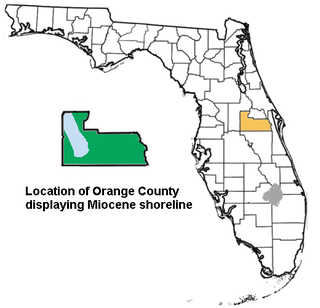This page is based on this
Wikipedia article Text is available under the
CC BY-SA 4.0 license; additional terms may apply.
Images, videos and audio are available under their respective licenses.
The Sibley-Monroe checklist was a landmark document in the study of birds. It drew on extensive DNA-DNA hybridisation studies to reassess the relationships between modern birds.

The diving ducks, commonly called pochards or scaups, are a category of duck which feed by diving beneath the surface of the water. They are part of Anatidae, the diverse and very large family that includes ducks, geese, and swans.

The redhead is a medium-sized diving duck. The scientific name is derived from Greek aithuia an unidentified seabird mentioned by authors including Hesychius and Aristotle, and Latin americana, of America. The redhead is 37 cm (15 in) long with an 84 cm (33 in) wingspan. It belongs to the genus Aythya, together with 11 other described species. The redhead and the common pochard form a sister group which together is sister to the canvasback.

The canvasback is a species of diving duck, the largest found in North America.

The common pochard is a medium-sized diving duck. The scientific name is derived from Greek aithuia an unidentified seabird mentioned by authors including Hesychius and Aristotle, and Latin ferina, "wild game", from ferus, "wild".

The tufted duck is a small diving duck with a population of close to one million birds, found in northern Eurasia. The scientific name is derived from Ancient Greek aithuia an unidentified seabird mentioned by authors including Hesychius and Aristotle, and Latin, fuligo "soot" and gula "throat".

The hardhead is the only true diving duck found in Australia. Hardheads are common in the south-east of Australia, particularly in the Murray-Darling Basin, but also in the wetter country near the coasts. They are moderately nomadic in normal years, but disperse widely in times of drought. Significant numbers reach as far afield as New Guinea, New Zealand, and the islands of the Pacific, where they can remain for some time, even breeding for a season or two.

The ferruginous duck, also ferruginous pochard, common white-eye or white-eyed pochard is a medium-sized diving duck from Eurasia. The scientific name is derived from Greek aithuia an unidentified seabird mentioned by authors including Hesychius and Aristotle, and nyrok, the Russian name for a duck.

Aythya is a genus of diving ducks. It has twelve described species. The name Aythya comes from the Ancient Greek word αυθυια, aithuia, which may have referred to a sea-dwelling duck or an auklet.

Baer's pochard is a diving duck found in eastern Asia. It breeds in southeast Russia and northeast China, migrating in winter to southern China, Vietnam, Japan, and India. The name commemorates the Estonian naturalist Karl Ernst von Baer.
Pochard include the following species of diving ducks:

The Orange County paleontological sites are assemblages of Late Pleistocene vertebrates occurring in Orange County, Florida.
Tyzzeria is a genus of parasitic alveolates that with one exception infect the cells of the small intestine.
The Nicolet Bird sanctuary is a protected area in Quebec and one of the 28 migratory bird sanctuary of that province. This refuge protects a migratory halt for duck and Canada goose and also a nesting area for waterfowl. It is located a few kilometers west of Nicolet on the south shore of Lake Saint Pierre.










